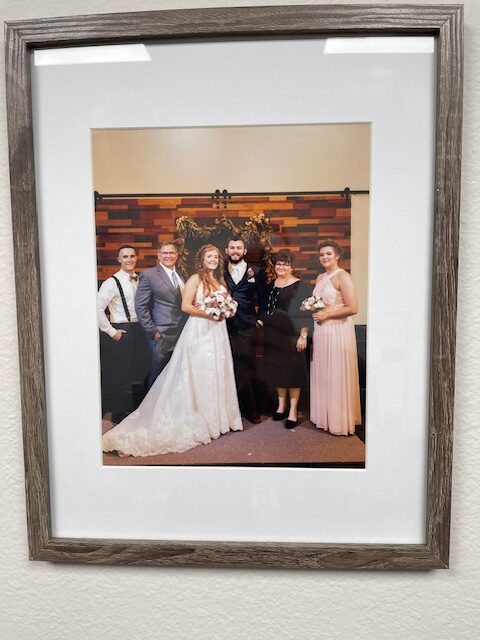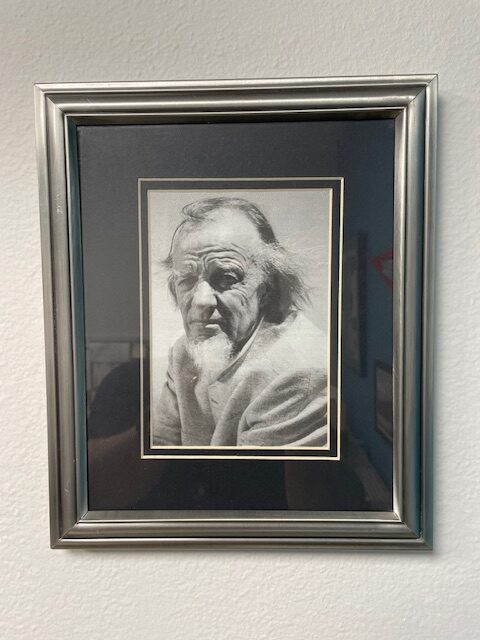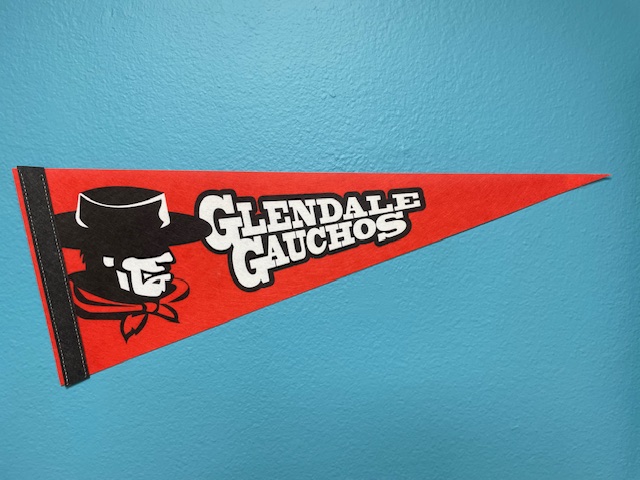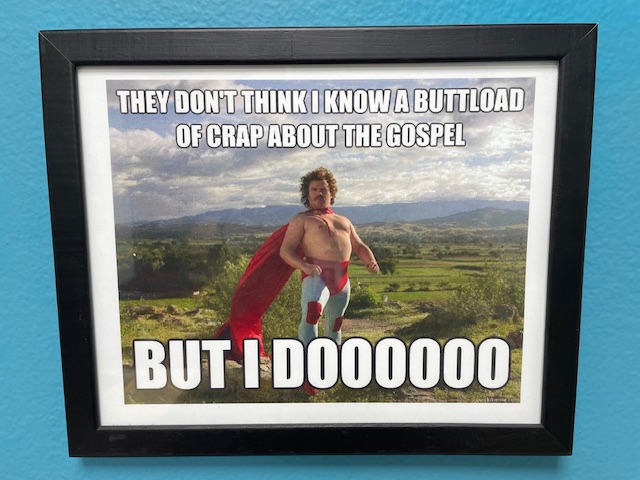When setting up my office space I wrestled with what to put on the walls–what do I want people to see when they come in my office? I meet with numerous students and I wanted the space to be a warm and inviting space that would provide a sense of who I am for those meeting me for the first time. The pictures and items on my walls reveal the diverse sides of who I am.
First, there is a picture of my family taken at my son’s wedding a few years ago. I love my family and this is a reminder that the most important things in life are not found in my office but in the relationships outside of it.

The next set of pictures revolve around Francis Schaeffer–a philosophical thinker. (I am in the Philosophy & Religious Studies Department, after all!)

Schaeffer was a philosopher and public intellectual whose writings I read in high school. He was the motivating factor for me to pursue philosophy and the life of the mind. I keep this quotation from him right above my desk as an inspirational reminder to me….

Next, people will see an art project my daughter and I worked on a few years ago. It’s based on the famous Shroud of Turin and we sought to recreate the image in a unique manner.

I read an article by literature professor, Nathan Wilson, about how he created a replication of the image by painting on a piece of glass and letting the sun bleach out the negative space. In other words, the dark parts of the image are not a result of being put on a light cloth but, rather, the result of a dark cloth being bleached out except for the areas of the image. My daughter and I tried it in our backyard and it worked!
No GCC office would be complete without a Gauchos flag!

The next two pictures reflect a bit of the fun side of who I am. These are also some of the first items students see when they come into my office. The first is a quotation from the movie “Nacho Libre”–a truly great movie!

And, finally, for the superhero enthusiast there is Batman. My friend drew this for me back in 1989. Michael Keaton’s Batman had recently come out and I was a fanatic. I saw the movie twice on the opening day–one time was at 3 am!

Yes, there are the miscellaneous philosophy books and scattered files that accompany any office in our department but the pictures give a picture of who I am in my diversity of personality. They remind me of who I am and I hope give a glimpse of my manifold character to the students who enter.




